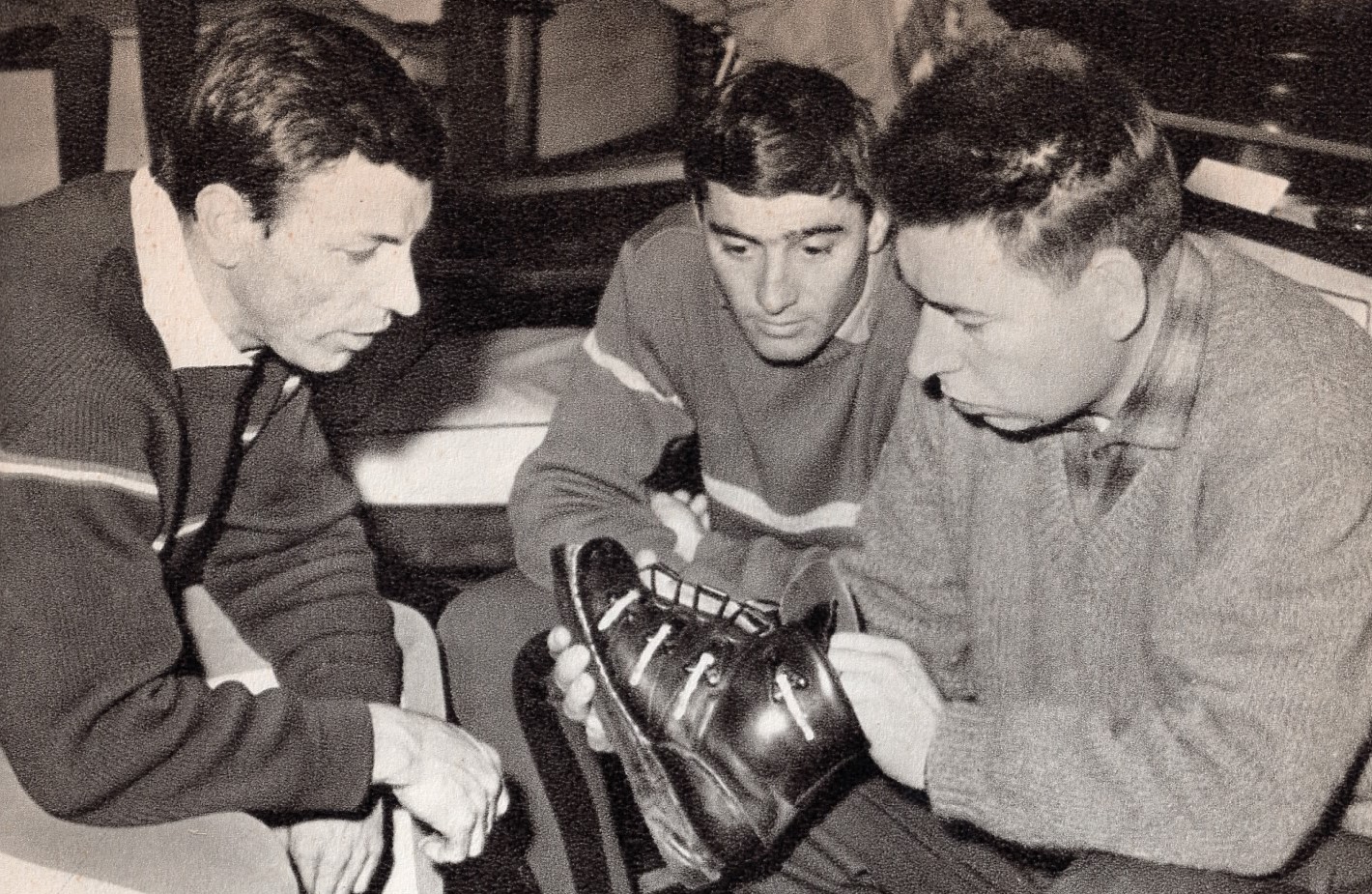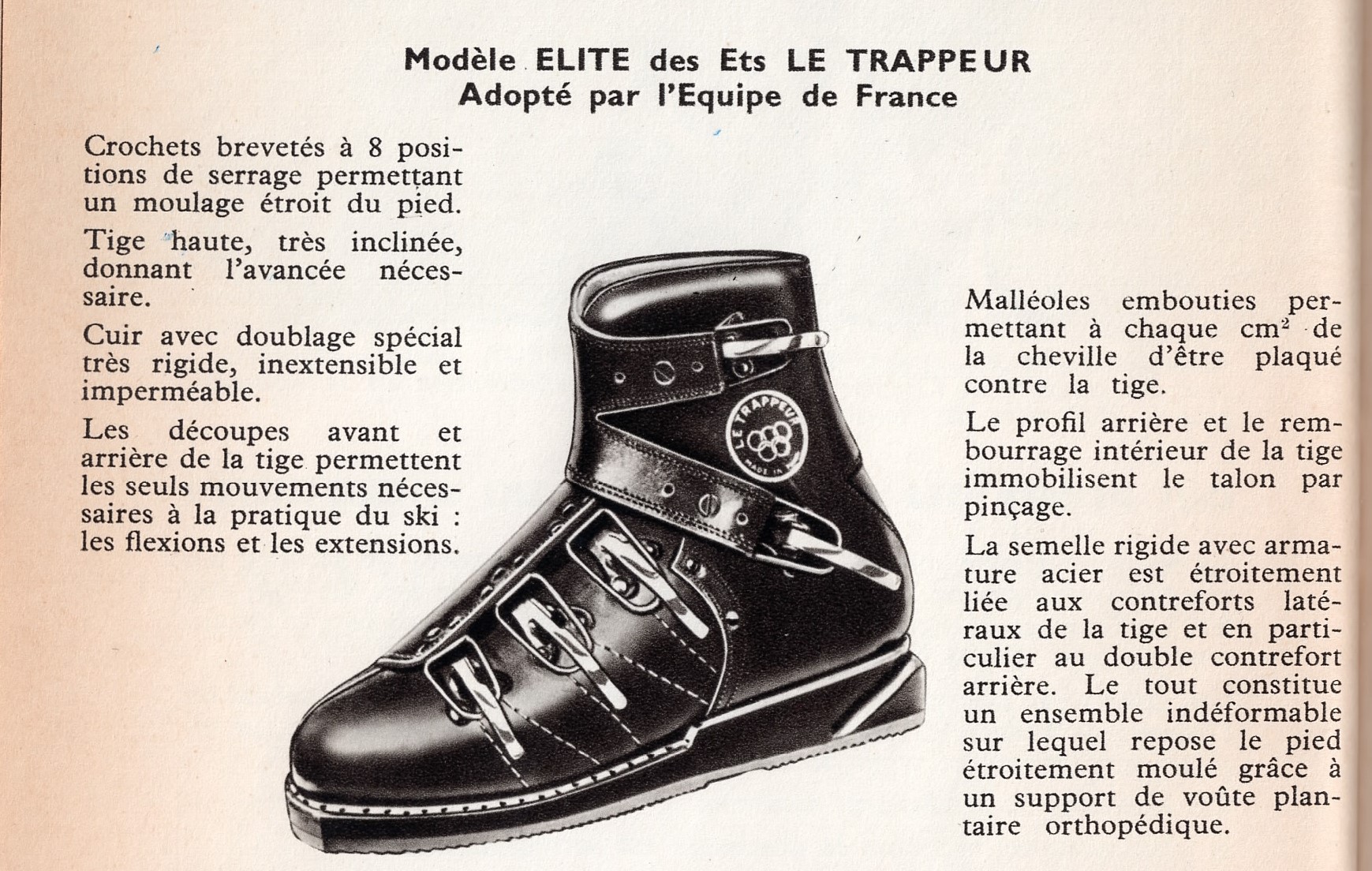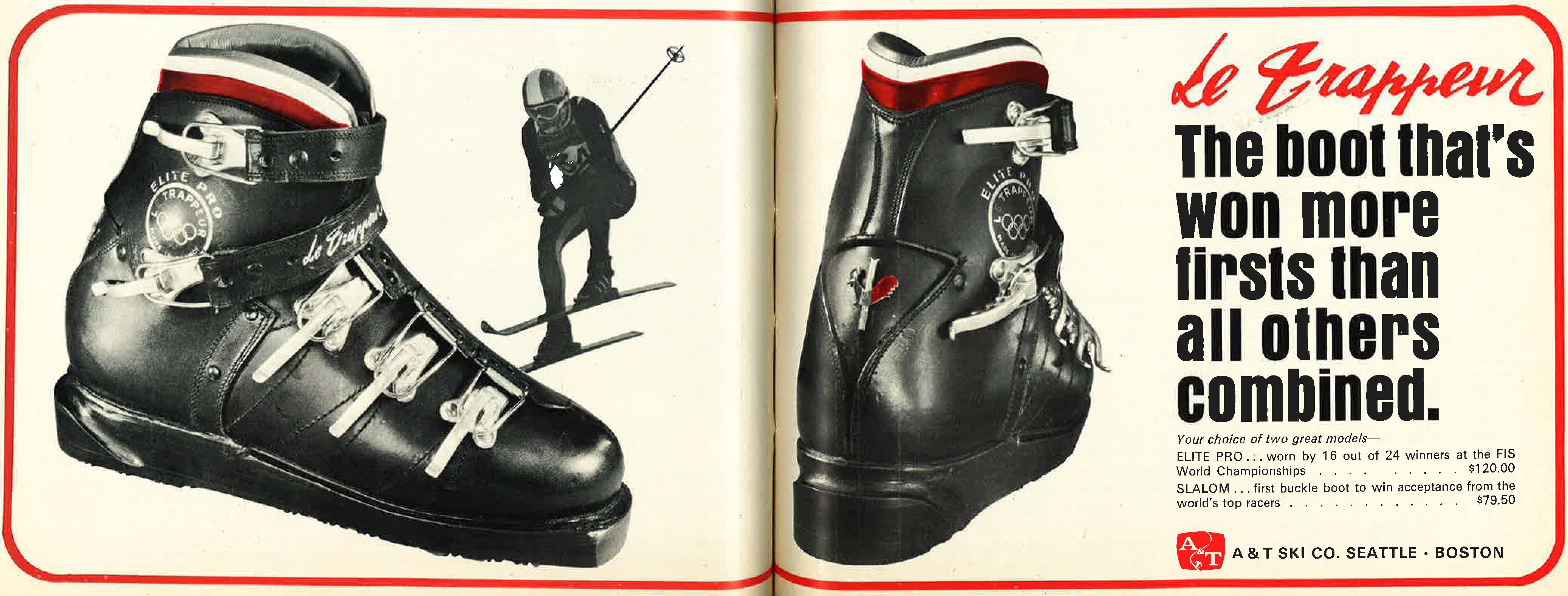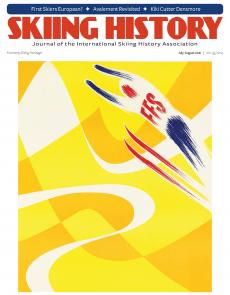SKIING HISTORY
Editor Seth Masia
Managing Editor Greg Ditrinco
Consulting Editor Cindy Hirschfeld
Art Director Edna Baker
Editorial Board
Seth Masia, Chairman
John Allen, Andy Bigford, John Caldwell, Jeremy Davis, Kirby Gilbert, Paul Hooge, Jeff Leich, Ron LeMaster, Bob Soden, Ingrid Wicken
Founding Editors
Morten Lund, Glenn Parkinson
To preserve skiing history and to increase awareness of the sport’s heritage
ISHA Founder
Mason Beekley, 1927–2001
ISHA Board of Directors
Rick Moulton, Chairman
Seth Masia, President
Wini Jones, Vice President
Jeff Blumenfeld, Vice President
John McMurtry, Vice President
Bob Soden (Canada), Treasurer
Einar Sunde, Secretary
Richard Allen, Skip Beitzel, Michael Calderone, Dick Cutler, Ken Hugessen (Canada), David Ingemie, Joe Jay Jalbert, Henri Rivers, Charles Sanders, Christof Thöny (Austria), Ivan Wagner (Switzerland)
Presidential Circle
Christin Cooper, Billy Kidd, Jean-Claude Killy, Bode Miller, Doug Pfeiffer, Penny Pitou, Nancy Greene Raine
Membership Services
Laurie Glover
(802) 375-1105
laurie@skiinghistory.org
Corporate Sponsorships
Peter Kirkpatrick
(541) 944-3095
peterk10950@gmail.com
Bimonthly journal and official publication of the International Skiing History Association (ISHA)
Partners: U.S. Ski and Snowboard Hall of Fame | Canadian Ski Museum and Hall of Fame
Alf Engen Ski Museum | North American Snowsports Journalists Association | Swiss Academic Ski Club
Skiing History (USPS No. 16-201, ISSN: 23293659) is published bimonthly by the International Skiing History Association, P.O. Box 1064, Manchester Center, VT 05255.
Periodicals postage paid at Manchester Center, VT and at additional mailing offices. Postmaster: Send address changes to ISHA, P.O. Box 1064, Manchester Center, VT 05255
ISHA is a 501(c)(3) public charity. EIN: 06-1347398
Written permission from the editor is required to reproduce, in any manner, the contents of Skiing History, either in full or in part.
Le Trappeur Elite: Killy's Winning Boot
1961 boot paved the way for avalement.
Photo above: The Elite, advertised in Skiing Magazine, November 1967. Skier is Guy Périllat. In that era, factories could not use the names of “amateur” athletes.

talk boots with Le Trappeur exec
Pierre Barbaroux. Joubert photo.
In the mid 1960s, when French racers began winning everything in sight using the new “avalement” technique described by Georges Joubert, (see page 18) journalists assumed that the breakthrough technique was enabled by a new generation of fiberglass skis introduced around 1961—notably the Dynamic VR7, the copycat Dynastar RG5 and the Rossignol Strato. Those skis, the gurus opined, stored energy in their tails, launching racers out of each turn toward the next.
They were partly right, but the French team had another advantage, little noticed at the time. In 1961, bootmaker Le Trappeur introduced the Elite race boot. It elevated the skier’s heel for what we would now call a steeper ramp angle, and the upper shaft had more forward lean than any race boot previously available. It was considerably stiffer, too.

Jouber'ts book Savoir Skier.
Eight years before high-back spoilers, the Elite put skiers in an aggressive knees-flexed position that encouraged application of strong fore-aft leverage. This enabled a skier to selectively pressure shovel, center and tail in a way not easily achieved before. A racer could retract instantly to absorb a roll and then efficiently press the tip of the ski down the backside to pump a little more speed.
The Elite came about when Le Trappeur licensed Henke’s Martin buckle patent, becoming the exclusive maker of buckle boots in France. To support the buckles, company owner and boot designer Marcel Carrier created double-thick reinforcing of the leather outer “shell.” This made for a very stiff structure, supported by a fiberglass shank in the sole connected to fiberglass reinforcements on either side of the heel. To provide better lateral power, Carrier made the cuff a couple of centimeters higher and added a fifth buckle. Five-buckle boots already existed. Carrier’s innovation was to angle the fourth buckle downward to fix the skier’s heel in its pocket.

around the heel.
The boot was immediately adopted by the French team. So equipped, Charles Bozon and Guy Périllat took gold and silver in the 1962 slalom world championships at Chamonix. Marielle Goitschel took slalom silver and combined gold. Other bootmakers took notice. According to Sven Coomer, who was there, Hans Heierling met with Carrier and bought a license to reproduce the Elite. So did Aldo Vaccari from Nordica, who went home and built the first buckle boot from Italy.
Heierling was the exclusive supplier to the U.S. Ski Team, because Jack Beattie (coach Bob’s brother) was the American importer. When Buddy Werner, Jean Saubert, Billy Kidd, Jimmie Heuga and the rest arrived at Innsbruck in 1964, they skied in Heierling’s version of the Elite. The original Le Trappeur Elite powered five French medals: gold and silver for the Goitschel sisters in both slalom and GS, and downhill silver for Leo Lacroix.
Soon, more factories in Austria and Italy sold unlicensed imitations. In 1965, Canadian coach Dave Jacobs told Bob Lange to cant his new plastic race boot forward and lock the cuff—in other words, make it ski like the Elite.

laminated polyurethane cover. Price
was $120.
From 1962 onward, Jean-Claude Killy used the Elite throughout his amateur career. The boot evolved over the course of the decade. By 1968, it had an injection-molded sole (a Nordica innovation) and a waterproof polyurethane laminate on the outside. The final version was the Elite Pro Blue of 1969-70. Killy stuck with the Elite until he signed with Lange in 1971. A year later, as he geared up for his championship pro-racing career, he was back in all-plastic Le Trappeurs.
Seth Masia is president of ISHA and editor of Skiing History. 
Table of Contents

Corporate Sponsors
ISHA deeply appreciates your generous support!
WORLD CHAMPIONSHIP ($3,000 AND UP)
Gorsuch
Polartec
Warren and Laurie Miller
CHAMPIONSHIP ($2,000)
Fairbank Group: Bromley, Cranmore, Jiminy Peak
Hickory & Tweed Ski Shop
Rossignol
Snowsports Merchandising Corp.
WORLD CUP ($1,000)
Aspen Skiing Company
Berkshire East Mountain Resort/Catamount Mountain Resort
Bogner
Boyne Resorts
Dale of Norway
Darn Tough Vermont
Dynastar | Lange | Look
Gordini USA Inc. | Kombi LTD
HEAD Wintersports
Intuition Sports, Inc.
Mammoth Mountain
Marker-Volkl USA
National Ski Areas Association
Outdoor Retailer
Ski Area Management
Ski Country Sports
Sport Obermeyer
Sports Specialists, Ltd.
Sun Valley Resort
Vintage Ski World
World Cup Supply
GOLD ($700)
Larson's Ski & Sport
Race Place | BEAST Tuning Tools
The Ski Company (Rochester, NY)
Thule
SILVER ($500)
Alta Ski Area
Boden Architecture PLLC
Dalbello Sports
Deer Valley
Ecosign Mountain Resort Planners
Fera International
Holiday Valley
Hotronic USA, Inc. | Wintersteiger
MasterFit Enterprises
McWhorter Driscoll, LLC
Metropolitan New York Ski Council
Mt. Bachelor
New Jersey Ski & Snowboard Council
Russell Mace Vacation Homes
Schoeller Textile USA
Scott Sports
Seirus Innovations
SeniorsSkiing.com
Ski Utah
Steamboar Ski & Resort Corporation
Swiss Academic Ski Club
Tecnica Group USA
Timberline
Trapp Family Lodge
Western Winter Sports Reps Association
World Pro Ski Tour
Yellowstone Club


